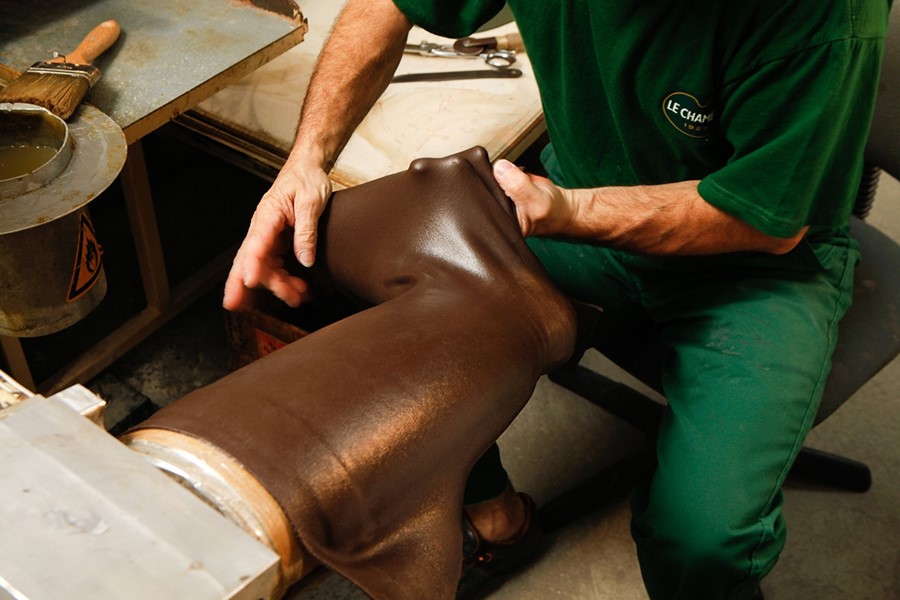Donatien Grau meets a pioneer in design: Australian born, London-based creative Marc Newson
Marc Newson (CBE) is one of the world’s most successful and influential designers. He has expressed the modes of his vision on numerous mediums, conceiving the smallest and the largest objects, from aircrafts and cars to furniture, jewellery and clothing. His work has been exhibited in such high-profile venues as the Design Museum and the Gagosian Gallery. His fascination with craftsmanship and drawing as much as with the most up-to-date technologies has placed him in a unique position in contemporary design and culture.
How would you connect fashion to elegance?
I don’t know if there’s a direct relation between the two: elegance is such a classical concept, and fashion somehow represents the antithesis of classicism. It’s the very expression of what is contemporary at a certain moment in time. Hopefully, in an ideal world, I wouldn’t need to: good fashion should be inherently elegant. But course, we don’t live in that world.
What is the role of history and art history in your conception of fashion?
The importance of the history of art in contemporary culture, let it be art, design, or fashion, is absolutely crucial. We are always referencing the history of art. I do it in my work, and I notice that many people in my field do not have the knowledge to do it. I studied art, not to become an artist, but because it seemed like the right thing to do at the time: there was a lot to learn, especially within the history of art. From the moment that you have the knowledge, you can use a wide range of references, from history, art history, but also from films. It is the case in any field of contemporary creativity.
"Style should be the geometry of fashion"
Would you describe fashion as a language and a discourse, as Barthes did?
When he did so in the 1960s, it certainly was a relevant statement. I wonder if you could say the same thing now: fashion seems to be in a very strange place, in a difficult moment, mostly for commercial reasons. It’s not as coherent, and there is not the same sense of narrative. It has turned into a far more commercial exercise.
The word "intellectual" was coined in a time of great political distress. Does fashion have a political role? And in which way?
As a very immediate, potent expression of contemporary culture, it has the potential to be enormously political. But its greatest potential is actually the opposite of politics: it’s anarchy. If you look at the role of fashion, during the period of punk, or in any other creative era, the most radical fashion was the strongest, as it expressed a deep sense of individuality. Classical fashion, if anything, is conservative, and far less interesting as a cultural phenomenon: it does not challenge anything, and does not convey the same individual political energy.
How would you relate the concept of "fashion" to the one of "style"?
It somehow comes back to the question of taste, a question I think a lot about. I do think that there is an absolute of good and bad in terms of taste, as in Classical Greek geometry, in the way Pythagoras described it: it is black or white, correct or incorrect. Style should be the geometry of fashion.
What does fashion have to do with intellectuality?
I struggle to see if there is much connection right now. There have been conversations, but less now. Therefore, the potential for it to reignite a conversation with the intellectual world is definitely there, and could well be very exciting.
You are a designer working across a wide range of media, and amongst them is clothing. Is there a specificity of clothing within your work?
I view the clothing I design as garments, not as fashion. They are utilitarian objects, and I conceive them in the same way as I have addressed many other typologies of products. That’s how I can justify being involved in that capacity.
As a designer, you are fascinated with the issue of craftsmanship, which seems to become more and more problematic and rarefied. What do you think is the situation of craftsmanship, in fashion and in design at large?
It is indeed becoming more rarefied and more problematic. And yet, it is becoming more relevant, and people are recognising it again. Ultimately, it is the one true reference – quality. At the very least, to have something that is well-made has considerable value. In the discussion of the world of luxury – such a horrible word, which doesn’t mean anything anymore – craftsmanship is one of the basic references that I have, throughout all the work that I do. Most of the things are transient, most of the things change, but I can always bring it back to being able to rely on some fundamental standard of craftsmanship. It is reassuring, on a number of level, not least historically. Craftsmanship is the justification of design as I see it.
In two weeks Donatien will be interviewing the artist Richard Phillips.
